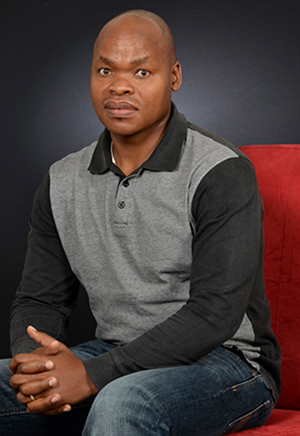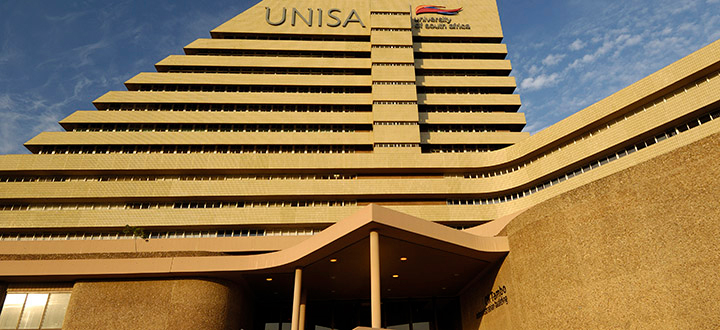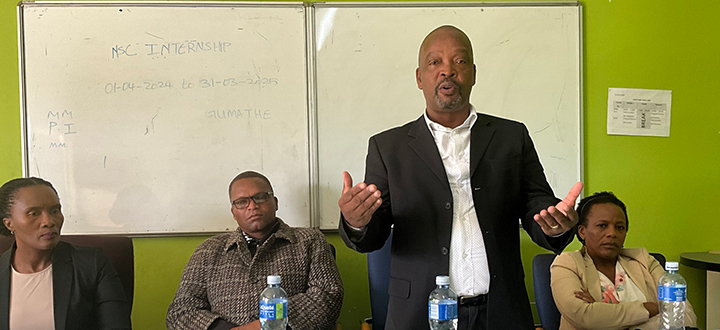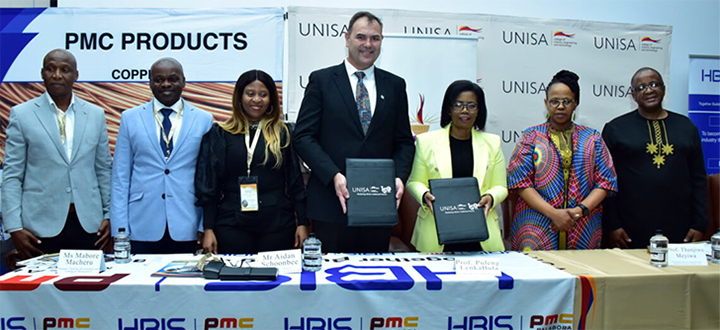College of Science, Engineering & Technology
Nanoscientist receives grant of R7,6m (plus R3,8m) for new equipment

Prof Mokhotjwa Dhlamini, College of Science, Engineering and Technology
In what surely ranks as one of the largest external grants yet awarded to a Unisa researcher, Prof Mokhotjwa Dhlamini of the College of Science, Engineering and Technology has received a grant of R7,6 million from the National Research Foundation’s National Equipment Programme.
Add to this the R3,8 million that Unisa contributes under the rules of the National Equipment Programme and the total amount of funding comes to R11,4 million – an impressive amount in these cash-strapped times for South African research.
"The grant was awarded after quite a rigorous process in which we had to demonstrate that the equipment we need would be used for research and capacity building that support national priorities," says Dhlamini, a C2-rated nanoscientist working in the field of luminescent nanomaterials.
In layperson’s terms, these are light-emitting materials that can be used for a range of applications, including imaging and cancer therapy, optical refrigeration and energy generation and storage.
It was in all probability the energy aspect that proved so compelling to the panel of reviewers who scrutinised and approved Dhlamini’s application.
Energy applications for an energy-starved country
"Considering South Africa’s energy situation, research that contributes to saving, generating and storing energy is a national priority," he says, explaining that luminescent materials have powerful potential across a range of energy applications. These include lighting, sensing, cooling, renewable energy generation (both solar and hydrogen) and energy storage, to mention a few.
Dhlamini says the grant will be used to procure an extremely costly piece of equipment known as Plasma Enhanced Chemical Vapour Disposition (PECVD). This machine is used to manufacture high-quality "thin films" that are crucial to his team’s research efforts.
"Lacking the means to fabricate thin films has been a major setback for us," he says, adding that news of the NRF award has come at just the right time for the Physics Department.
The PECVD will be installed at CSET’s laboratories on the Science Campus in Florida in what is known as a "clean room" - an environment completely free of dust and other contaminants. The Unisa clean room was completed as recently as August 2019, ensuring that the multimillion-rand machine it will soon be housing has a proper home.
Dhlamini says the process of procuring the PECVD, which has to be imported from overseas, will begin in January 2020.
Once the machine is up and running, the research team expect to move ahead swiftly with their work. Dhlamini says five master’s and up to 10 doctoral students will benefit from the arrival of the new machine. Opportunities for postgraduate training and development were another compelling factor in his motivation to the NRF, as was his commitment to collaborating with researchers at previously disadvantaged universities.
Specifically, he and his team will be collaborating with the QwaQwa campus of the University of the Free State on research into light-emitting diodes (LEDs), with the University of Limpopo on energy storage and with the University of Fort Hare in the Eastern Cape on solar cells.
Says Dhlamini: "This equipment is a national investment for national priorities. It will also give us as Unisa an edge for collaborating with industry and, down the line, for patenting and commercialising our innovations. Unisa has invested a lot in its laboratories and we need to make sure these investments seed good returns."
* By Clairwyn van der Merwe, Contract writer, Directorate of Research Support
Publish date: 2019-12-12 00:00:00.0

 Unisa remains anchored among the waves
Unisa remains anchored among the waves
 Inhlanyelo Hub explores sustainable tourism initiatives in Marico Biosphere Reserve
Inhlanyelo Hub explores sustainable tourism initiatives in Marico Biosphere Reserve
 Unisa KZN Region explores extending university services to KwaMpungose community
Unisa KZN Region explores extending university services to KwaMpungose community
 Unisa's catalytic niche areas provide industry-focused mining innovations
Unisa's catalytic niche areas provide industry-focused mining innovations